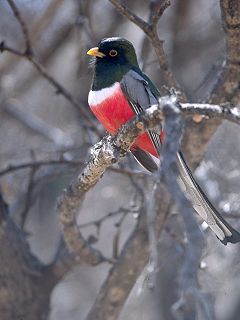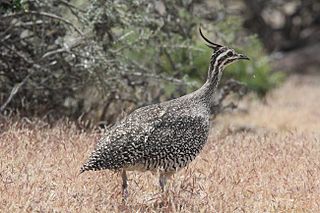Related Research Articles

Caenorhabditis elegans is a free-living transparent nematode about 1 mm in length that lives in temperate soil environments. It is the type species of its genus. The name is a blend of the Greek caeno- (recent), rhabditis (rod-like) and Latin elegans (elegant). In 1900, Maupas initially named it Rhabditides elegans. Osche placed it in the subgenus Caenorhabditis in 1952, and in 1955, Dougherty raised Caenorhabditis to the status of genus.

Howard Robert Horvitz ForMemRS NAS AAA&S APS NAM is an American biologist best known for his research on the nematode worm Caenorhabditis elegans, for which he was awarded the 2002 Nobel Prize in Physiology or Medicine, together with Sydney Brenner and John E. Sulston, whose "seminal discoveries concerning the genetic regulation of organ development and programmed cell death" were "important for medical research and have shed new light on the pathogenesis of many diseases".

Sir John Edward Sulston was a British biologist and academic who won the Nobel Prize in Physiology or Medicine for his work on the cell lineage and genome of the worm Caenorhabditis elegans in 2002 with his colleagues Sydney Brenner and Robert Horvitz. He was a leader in human genome research and Chair of the Institute for Science, Ethics and Innovation at the University of Manchester. Sulston was in favour of science in the public interest, such as free public access of scientific information and against the patenting of genes and the privatisation of genetic technologies.

The spermatheca, also called receptaculum seminis, is an organ of the female reproductive tract in insects, e.g. ants, bees, some molluscs, oligochaeta worms and certain other invertebrates and vertebrates. Its purpose is to receive and store sperm from the male or, in the case of hermaphrodites, the male component of the body. Spermathecae can sometimes be the site of fertilization when the oocytes are sufficiently developed.

The blue-tailed damselfly or common bluetail is a damselfly, belonging to the family Coenagrionidae.

The elegant trogon is a near passerine bird in the trogon family. Along with the eared quetzal, it is the most poleward-occurring species of trogon in the world, ranging from Guatemala in the south as far north as the upper Gila River in Arizona and New Mexico. The most northerly populations of subspecies ambiguus are partially migratory, and the species is occasionally found as a vagrant in southeasternmost and western Texas.

Elmisaurus is an extinct genus of caenagnathid dinosaur from the Late Cretaceous Nemegt Formation of Mongolia. It was a theropod belonging to the Oviraptorosauria.

The ring-tailed vontsira, locally still known as the ring-tailed mongoose is a euplerid in the subfamily Galidiinae, a carnivoran native to Madagascar. It is the only species in genus Galidia.

The Wyoming ground squirrel is a species of rodent in the family Sciuridae. It is endemic to the Northwestern United States.

The elegant water shrew is a species of mammal in the subfamily Soricinae of the family Soricidae. It is monotypic within the genus Nectogale. It lives in Sikkim and China.

Eudromia is a genus of birds in the tinamou family. This genus comprises two crested members of this South American family.

Victor R. Ambros is an American developmental biologist who discovered the first known microRNA (miRNA). He is a professor at the University of Massachusetts Medical School in Worcester, Massachusetts.
Gary Bruce Ruvkun is an American molecular biologist at Massachusetts General Hospital and professor of genetics at Harvard Medical School in Boston. Ruvkun discovered the mechanism by which lin-4, the first microRNA (miRNA) discovered by Victor Ambros, regulates the translation of target messenger RNAs via imperfect base-pairing to those targets, and discovered the second miRNA, let-7, and that it is conserved across animal phylogeny, including in humans. These miRNA discoveries revealed a new world of RNA regulation at an unprecedented small size scale, and the mechanism of that regulation. Ruvkun also discovered many features of insulin-like signaling in the regulation of aging and metabolism. He was elected a Member of the American Philosophical Society in 2019.
Platycraniellus is an extinct genus of non-mammalian cynodonts. It is known from the Early Triassic Lystrosaurus Assemblage Zone of the Normandien Formation of South Africa. The type and only species is P. elegans.
In molecular biology mir-84 microRNA is a short RNA molecule. MicroRNAs function to regulate the expression levels of other genes by several mechanisms.

Hypericum elegans is a species of flowering plant in the St. John's wort family Ericaceae. It is native to Europe.

Bauruemys is an extinct genus of turtles in the family Podocnemididae.

Mariannaea elegans an anamorphic fungus. It is mainly found on rotting wood and soil. M. elegans is not pathogenic to humans, animals, or plants.
The Dod-13 gene in the worm Caenorhabditis elegans encoding a cytochrome p450 enzyme, which have steroid hydroxylase activity, with the CYP Symbol CYP35B1. Dod-13 is downstream gene of Daf-16 influenced the lifespan of C. elegans.
References
- ↑ Catalogus Coleopterorum Europae. E Reitter, Caucasi et Armeniae Rossicae, Paskau, 1906